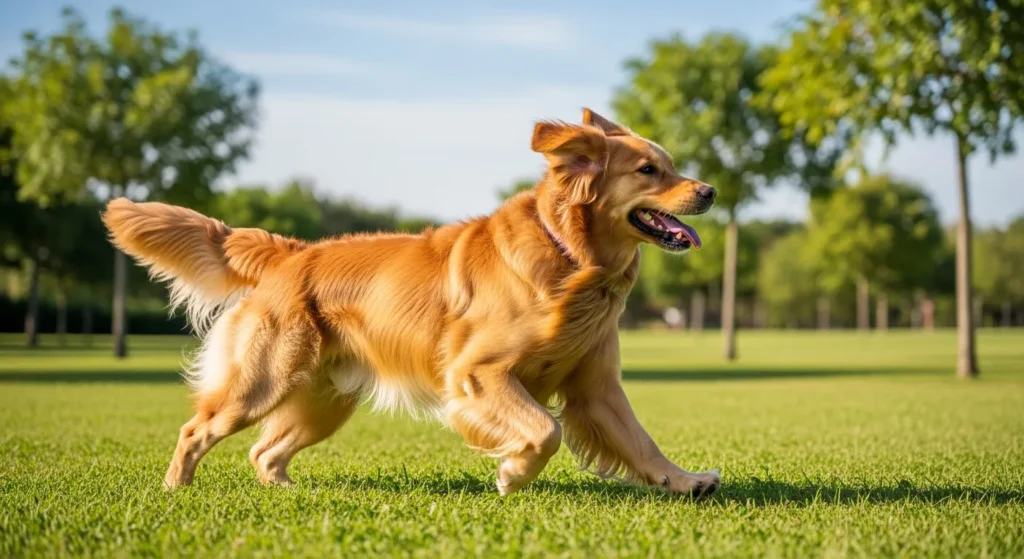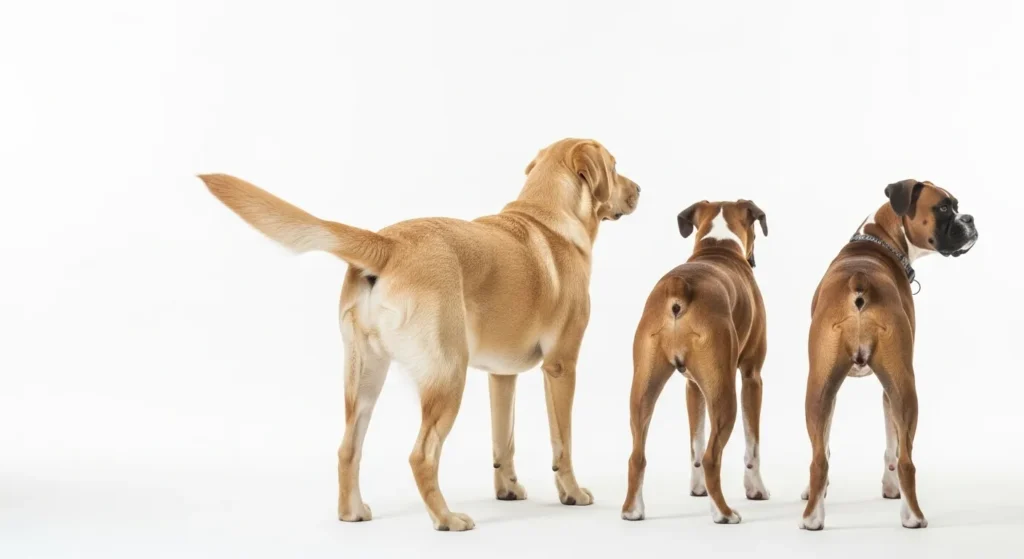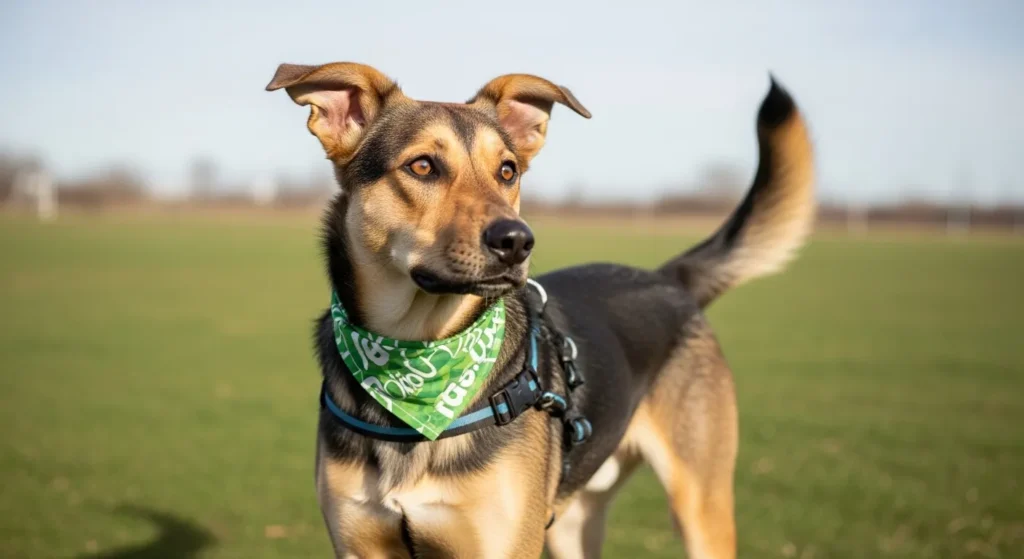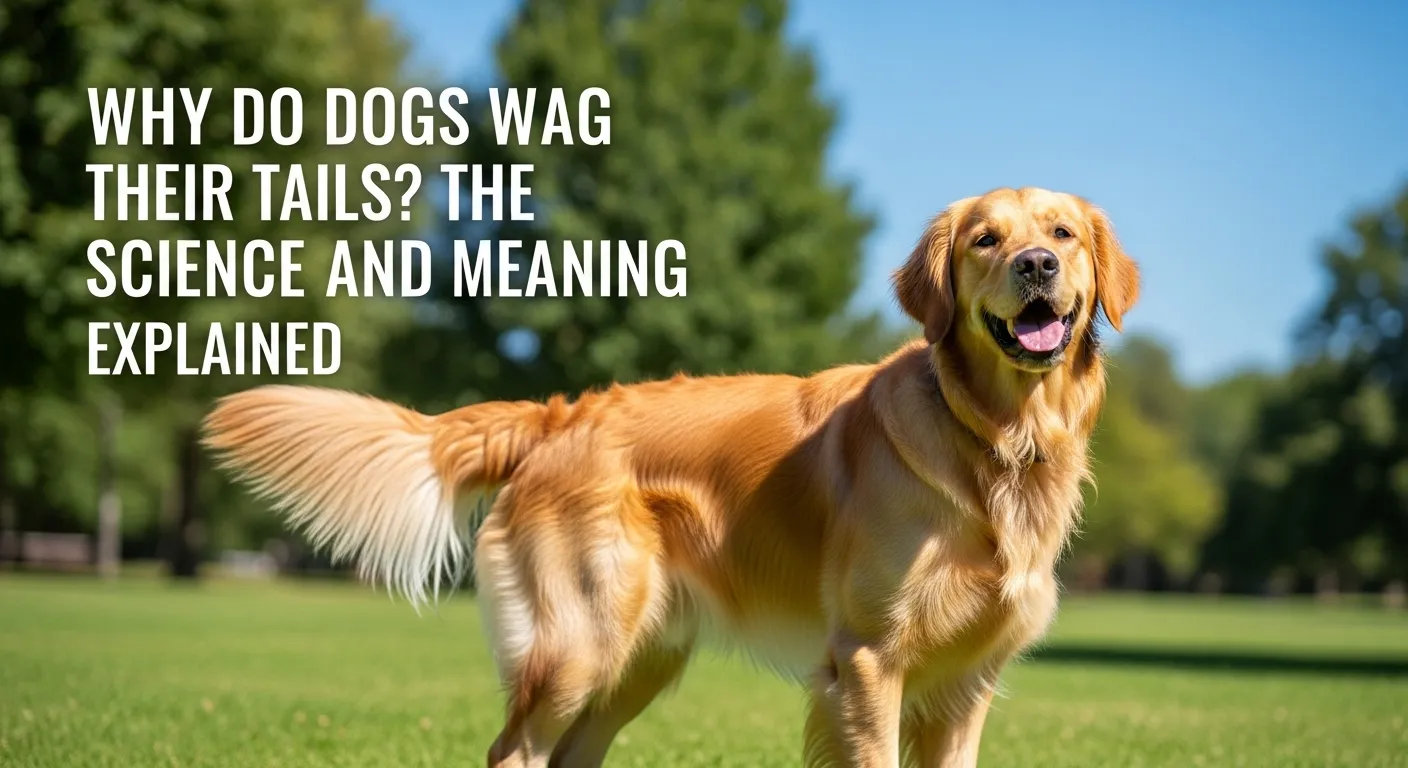Dogs wag their tails to express emotions and communicate with others. This behavior is natural and instinctive. It can signal happiness, alertness, or even aggression. By understanding tail wagging, you can better understand your dog’s feelings and needs. This guide covers the science, meanings, and patterns of tail wagging, based on recent research and expert insights.
What Does Tail Wagging Mean?
Tail wagging is a dog’s way of communicating. The meaning depends on the speed, direction, and context of the wag. Here are the main emotions dogs express through their tails:
- Happiness or Friendliness: A loose, wide wag often means a dog is happy or playful. This is common when dogs greet their owners or meet friendly people or pets.
- Alertness or Curiosity: A slow, deliberate wag can show a dog is curious or assessing a situation. The dog might be unsure but interested.
- Aggression or Warning: A fast, stiff wag, often with raised fur, can signal aggression or discomfort. This is a sign to approach with caution.
- Excitement or Playfulness: A rapid, circular wag (sometimes called a “helicopter wag”) shows high excitement, often seen during playtime.
Each dog’s tail wagging style is unique. Breed, personality, and past experiences shape how a dog uses its tail.

The Science Behind Tail Wagging
Dogs inherited tail wagging from their wolf ancestors. Wolves use their tails to signal dominance, submission, or alertness. Over time, domestication made dogs’ tail wagging more expressive. A 2023 study in Biology Letters found that dogs wag their tails more than wolves, likely due to selective breeding for social traits.
The direction of the wag matters. Research from the University of Trento in 2021 showed:
- Right Wag: Dogs often wag to the right when feeling positive emotions, like happiness or curiosity.
- Left Wag: A wag to the left can indicate negative emotions, like fear or aggression.
This happens because the brain’s hemispheres control opposite sides of the body. The left brain, linked to positive emotions, controls the right side, and vice versa.
Why Do Some Dogs Wag More Than Others?
Not all dogs wag their tails the same way. Factors that affect tail wagging include:
- Breed: Breeds with long, expressive tails (like Labradors) wag more noticeably than breeds with short or docked tails (like Boxers).
- Personality: Outgoing dogs may wag more than shy ones.
- Health: Pain or injury can reduce tail wagging. If your dog stops wagging suddenly, check for health issues using our Pet Symptom Checker.

Common Tail Wagging Patterns
Here are some common tail wagging patterns and what they mean:
- Broad, Loose Wag: Indicates a friendly, relaxed dog.
- Fast, Short Wag: Shows alertness or agitation. The dog might be preparing to act.
- Slow, Controlled Wag: Suggests curiosity or caution.
- High, Stiff Wag: Can signal dominance or aggression, especially if the tail is held high.
Pay attention to your dog’s body language. Ears, eyes, and posture provide context for the wag’s meaning. For example, a wagging tail with bared teeth might indicate aggression, not playfulness.
Why Do Dogs Wag Their Tails When Sleeping?
Some dogs wag their tails during sleep. This usually happens during REM (rapid eye movement) sleep, when dogs dream. The wagging might reflect emotions from the dream, like chasing a ball or meeting another dog. If your dog wags its tail while sleeping, it’s likely just dreaming, not a cause for concern.
For more on dog behaviors, check out our article on Why Does My Dog Follow Me Everywhere?.
Can All Dogs Wag Their Tails?
Most dogs can wag their tails, but some factors limit this behavior:
- Docked Tails: Breeds like Dobermans or Rottweilers often have docked tails, making wagging less visible.
- Injuries: Tail injuries or conditions like limber tail syndrome can stop wagging temporarily.
- Health Issues: Pain, arthritis, or neurological problems can affect tail movement. Use our Pet Symptom Checker to investigate unusual behavior.
If your dog stops wagging its tail, consult a vet. The ASPCA recommends monitoring for other signs, like lethargy or limping, to catch health issues early.
How to Understand Your Dog’s Tail Wagging
To better understand your dog’s tail wagging, try these tips:
- Observe Patterns: Watch the speed, direction, and context of the wag over time.
- Check Body Language: Look at ears, eyes, and posture to interpret the wag’s meaning.
- Know Your Dog’s Breed: Use our Pet Breed Finder Quiz to learn about breed-specific behaviors.
- Monitor Changes: Sudden changes in wagging could signal health or emotional issues.
For more behavior insights, read our article on Why Does My Dog Lick Me So Much?.

People Also Ask
Here are answers to common questions about dog tail wagging, inspired by Google’s “People Also Ask”:
Do Dogs Wag Their Tails When Angry?
Yes, dogs can wag their tails when angry. A fast, stiff wag, often with raised fur or a tense posture, signals aggression or discomfort. Always approach cautiously if you see this.
Why Do Dogs Wag Their Tails to the Right?
Dogs wag their tails to the right when feeling positive emotions, like happiness or curiosity. This is linked to the brain’s left hemisphere, which controls positive feelings, according to a 2021 study.
Can Dogs Control Their Tail Wagging?
Tail wagging is mostly involuntary, driven by emotions. However, dogs can learn to control it slightly with training, especially for specific tasks like therapy work.
Why Don’t Some Dogs Wag Their Tails?
Some dogs don’t wag their tails due to docked tails, injuries, or health issues. Shy or anxious dogs may also wag less. Check for health concerns with our Pet Symptom Checker.
Related Searches
Based on Google’s “Related Searches,” here are additional topics to address:
- Dog Tail Wagging Emotions: Tail wagging reflects a range of emotions, from joy to aggression. Always consider the context.
- Dog Tail Wagging Left vs. Right: The direction of the wag can indicate positive or negative emotions, as explained earlier.
- Dog Tail Wagging While Sleeping: This is normal during dreams and not a cause for concern.
- Dog Breeds with Unique Tails: Breeds like Pugs (curly tails) or Boxers (docked tails) have distinct wagging styles. Learn more with our Pet Breed Finder Quiz.
Final Thoughts
Tail wagging is a key part of how dogs communicate. By learning the patterns and meanings, you can better understand your dog’s emotions and needs. Watch for changes in wagging to catch health or behavior issues early. Use our tools like the Pet Symptom Checker or Pet Breed Finder Quiz to dive deeper into your dog’s behavior and care.
For related reading, explore:
